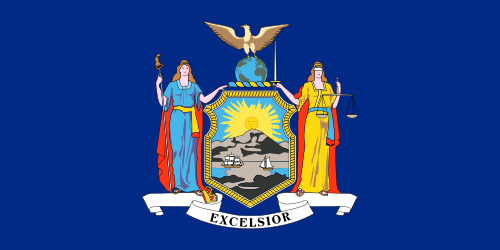New York Amendment 1, Spending on Sewage Facilities Excluded from Debt Limits Amendment (2003)
| New York Amendment 1 | |
|---|---|
| Election date |
|
| Topic Debt limits |
|
| Status |
|
| Type Legislatively referred constitutional amendment |
Origin |
New York Amendment 1 was on the ballot as a legislatively referred constitutional amendment in New York on November 4, 2003. It was approved.
A “yes” vote supported allowing local governments to exclude sewage‑facility debt from their constitutional debt limits for an additional ten years. |
A “no” vote opposed allowing local governments to exclude sewage‑facility debt from their constitutional debt limits for an additional ten years. |
Election results
|
New York Amendment 1 |
||||
|---|---|---|---|---|
| Result | Votes | Percentage | ||
| 839,208 | 52.53% | |||
| No | 758,359 | 47.47% | ||
Text of measure
Ballot title
The ballot title for Amendment 1 was as follows:
| “ | Exclusion of Indebtedness Contracted for Sewage Facilities The proposed amendment to Article 8, Section 5 of the Constitution would extend for ten (10) years, until January 1, 2014, the authority of counties, cities, towns and villages to exclude from their constitutional debt limits indebtedness contracted for the construction or reconstruction of sewage facilities. Shall the proposed amendment be approved? | ” |
Full Text
The full text of this measure is available here.
Path to the ballot
- See also: Amending the New York Constitution
A simple majority vote is required during two successive legislative sessions for the New York State Legislature to place a constitutional amendment on the ballot. That amounts to a minimum of 126 votes in the New York State Assembly and 32 votes in the New York State Senate, assuming no vacancies. Amendments do not require the governor's signature to be referred to the ballot.
See also
External links
Footnotes
State of New York Albany (capital) | |
|---|---|
| Elections |
What's on my ballot? | Elections in 2025 | How to vote | How to run for office | Ballot measures |
| Government |
Who represents me? | U.S. President | U.S. Congress | Federal courts | State executives | State legislature | State and local courts | Counties | Cities | School districts | Public policy |


